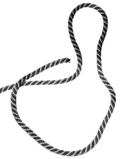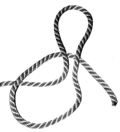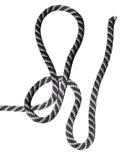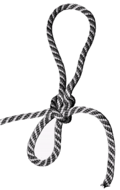m (18 revisions: re-import from WB, including edit history) |
|||
| (9 intermediate revisions by 2 users not shown) | |||
| Line 1: | Line 1: | ||
| + | <noinclude><translate><!--T:2--> | ||
| + | </noinclude> | ||
{{Knot | {{Knot | ||
| name=Halter hitch, Hitching tie | | name=Halter hitch, Hitching tie | ||
| − | | use = The '''halter hitch''', sometimes called a '''hitching tie''' | + | | use = The '''halter hitch''', sometimes called a '''hitching tie''' is used to tie the lead rope, which is attached to a horse's halter (or to a boat), to a post or hitching rail. The benefit of the halter hitch is that it can be released by pulling on one end of the rope. Even if there is tension on the horse-side of the rope it can still be release with ease. |
|tying_instructions = | |tying_instructions = | ||
<gallery> | <gallery> | ||
Image:HalterHitch01.png|Pass the working end of the rope over the standing part. | Image:HalterHitch01.png|Pass the working end of the rope over the standing part. | ||
Image:HalterHitch02.png|Pass the working end behind the loop. | Image:HalterHitch02.png|Pass the working end behind the loop. | ||
| − | Image:HalterHitch03.png|Create a bight in the working end of the rope. | + | Image:HalterHitch03.png|Create a bight in the working end of the rope. The bight is then passed in front of the main loop and into the second loop. |
| − | Image:HalterHitch04.png|Tighten the hitch by pulling on the standing end and the bight. | + | Image:HalterHitch04.png|Tighten the hitch by pulling on the standing end and the bight. The hitch can be finished by passing the working end through the bight. |
</gallery> | </gallery> | ||
| − | }}<noinclude> | + | }} |
| + | |||
| + | <!--T:4--> | ||
| + | <noinclude></translate></noinclude> | ||
Latest revision as of 03:40, 27 July 2022
| Halter hitch, Hitching tie |
|---|
|
Use: The halter hitch, sometimes called a hitching tie is used to tie the lead rope, which is attached to a horse's halter (or to a boat), to a post or hitching rail. The benefit of the halter hitch is that it can be released by pulling on one end of the rope. Even if there is tension on the horse-side of the rope it can still be release with ease.
How to tie:
|




